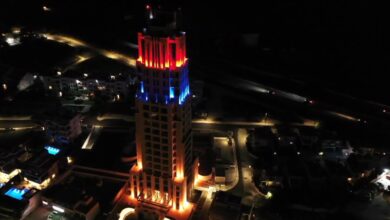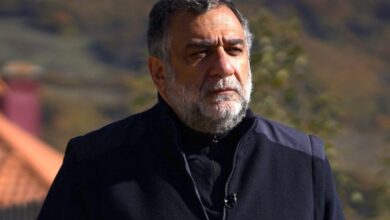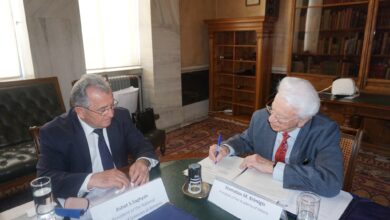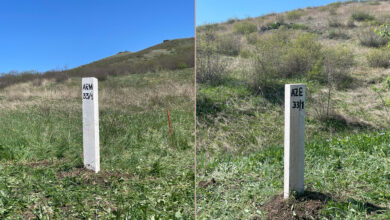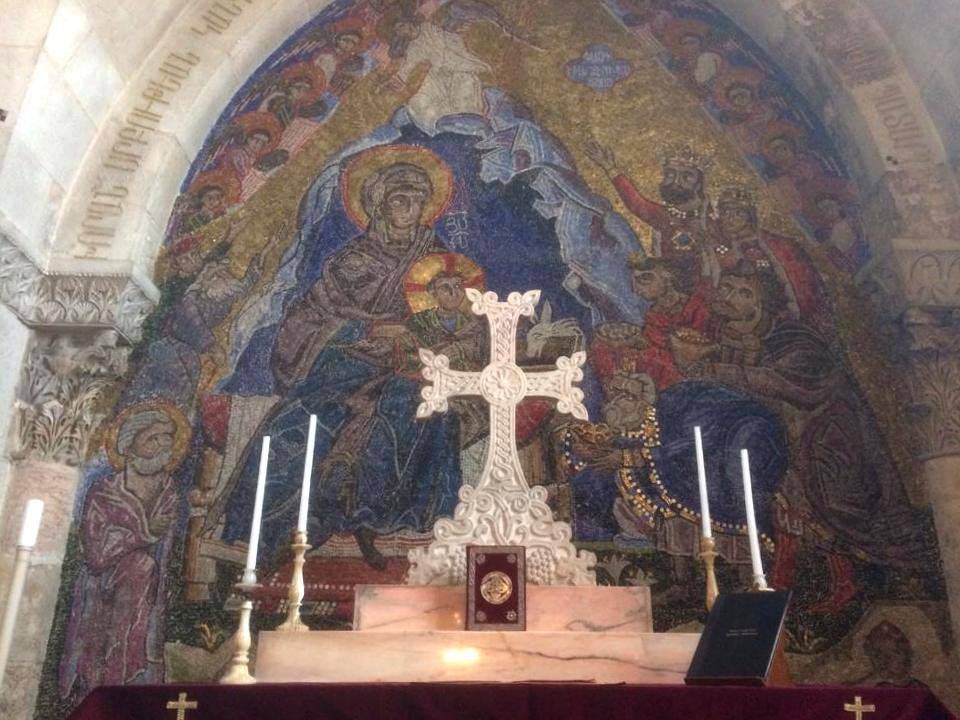
Coming Sunday Divine Liturgy will be celebrated in the Holy Sepulcher, at the so-called Armenian Gallery or Second Golgotha, the Armenian Patriarchate of Jerusalem informs.
One week after the celebration of the Ascension of Virgin Mary, Divine Liturgy is celebrated at the Chapel of the Intercession of the Holy Virgin.
According to the Armenian tradition in Jerusalem, the Superior of the Holy Sepulcher, the very Reverend Father Samuel Aghoyan, is the celebrant. As the very Reverend Father Samuel cannot be present, the very Reverend Father Theodorus, Dean of the Theological Seminary, will celebrate the Divine Liturgy.
After the destruction of a large part of the Holy Sepulcher, St. John the Patriarch had sent people and material to rebuild the Church, which included also this part building. In the Armenian tradition this is called “second Golgotha”, as a compensation for the loss of many Armenian rights on Golgotha; this area is restored around 1439.
The Altar on which Mass this Sunday will be celebrated, is called the Intercession of St. Mary.
Virgin Mary has a distinctive role in Christianity, chosen by God for her purity and faith to be the mother of our Lord Jesus Christ. Christian faith holds reverence for Virgin Mary, and beseeches her intercession.
Early Christian tradition, written down by St. Sophronius (560-638 AD), tells us about St. Mary the Egyptian.
St. Mary was born in Egypt and led in her youth a sinful life. In the city of Alexandria she joined a group of pilgrims going to the Holy City of Jerusalem for the Feast of the Exaltation of the Cross. She did not cease sinning while traveling to Jerusalem. Interested to see the relic of the true Cross at the Feast in the Church of the Holy Sepulcher with the crowds, she could not get into the Church, as an unseen force kept her from entering the Church.
Then she realized that she was not allowed to get in the Holy Place because of her manifold sins. She looked to an icon of Virgin Mary and beseeched her intercession, promising to repent and not sin again, and to renounce her worldly desires. Then she could enter the Church and participate in the Liturgy. When leaving the Church, a stranger gave her three coins, for which she bought three breads. After this change of heart and true conversion, St. Mary of Egypt lived in the desert as a hermit.
St. Sophronius tells us that the priest St. Zosima lived an ascetic life in a monastery in the desert of Judea. Towards the end of the Great Lent, the monks went out to the desert to live in solitude, and return to celebrate together Palm Easter, Holy Week and the Feast of the Resurrection of our Lord.
St. Zosima did thus, and encountered in the desert the humble St. Mary of Egypt, who told him her history, her sinful life, her conversion after beseeching Virgin Mary’s intercession, and her decision to live as a hermit.
She asked him to return next year on Maundy Thursday, and bring her some of the Holy Communion, because she did not participate in celebrating Holy Communion during her 47 years in the desert. The following year, St. Zosima went into the desert, near the banks of the River Jordan. St. Mary of Egypt was on the other side of the river, and crossed it by walking on the surface of the water. After taking Holy Communion, St. Mary of Egypt asked St. Zosima to bring her also next year Holy Communion.
The following year however, St. Zosima arrived at the meeting place and did not find her. There lay the body of St. Mary of Egypt, with a note requesting to bury her. St. Zosima understood that she died on Good Friday, immediately after taking Holy Communion in the previous year.
St. Zosima started to dig in the dried out ground, when a lion appeared. The lion was gentle and helped him to dig a grave for St. Mary of Egypt. After the burial, St. Zosima returned to the monastery and told the monks what had happened.
Paintings depicting St. Mary of Egypt show her as an old lady with grey hair, covered with an old garment, sometimes with three breads in her hands.


